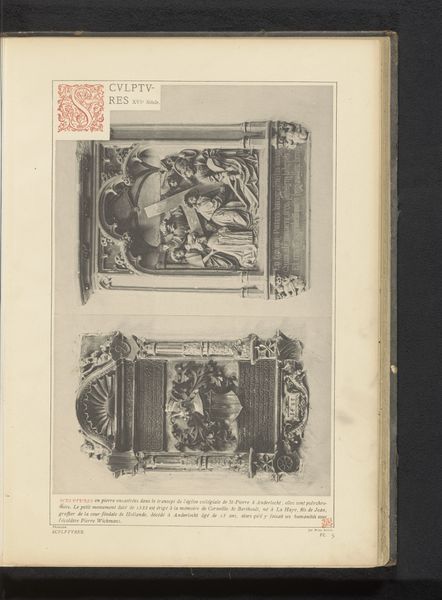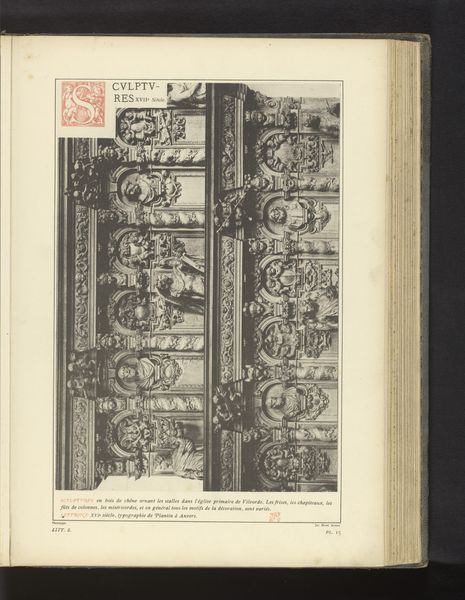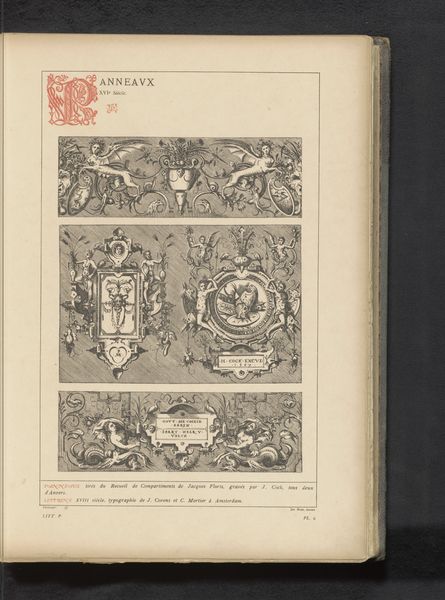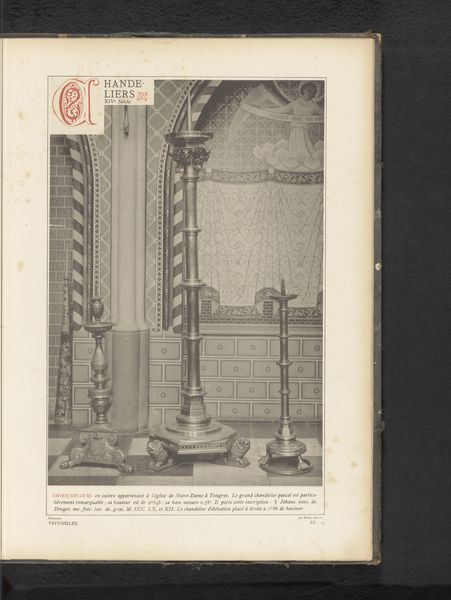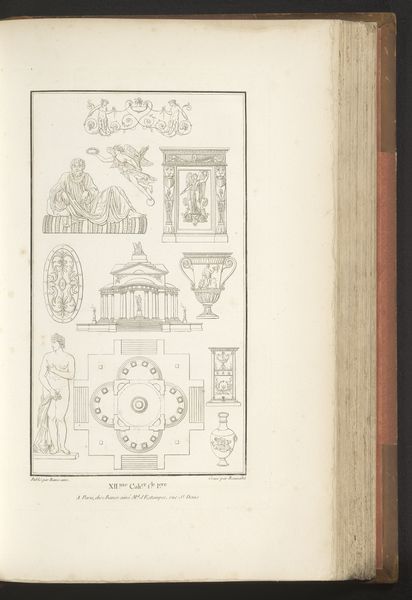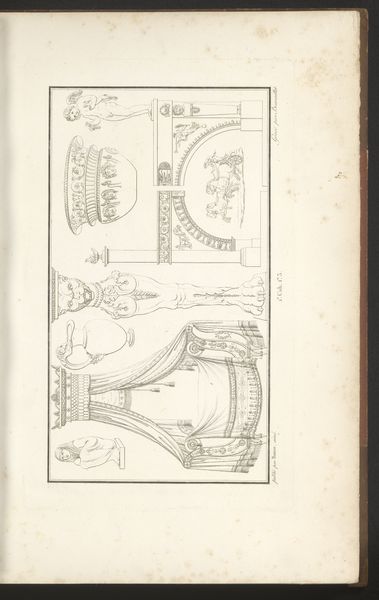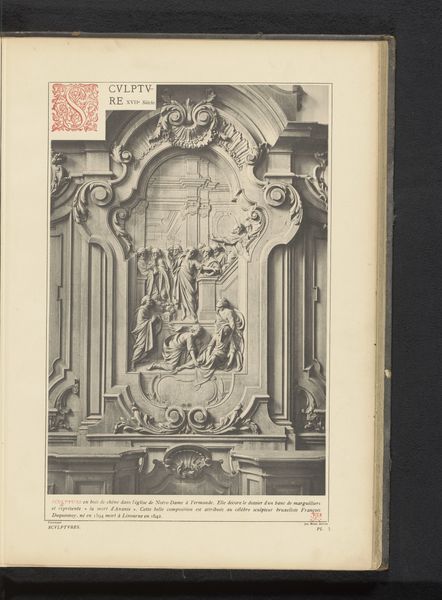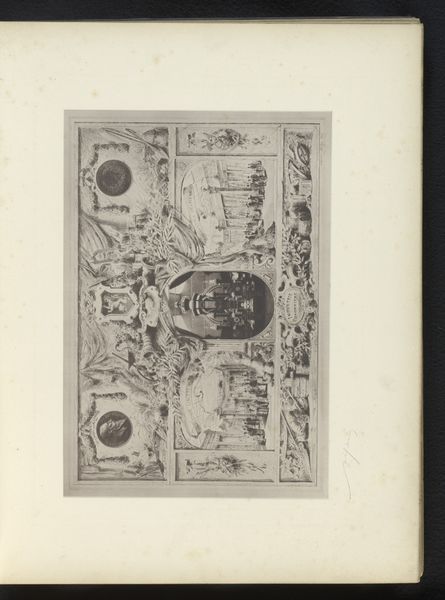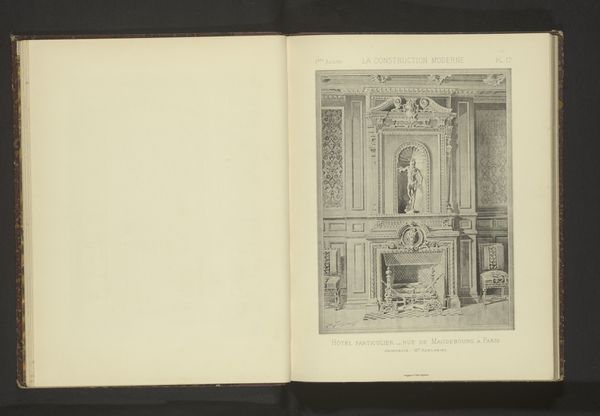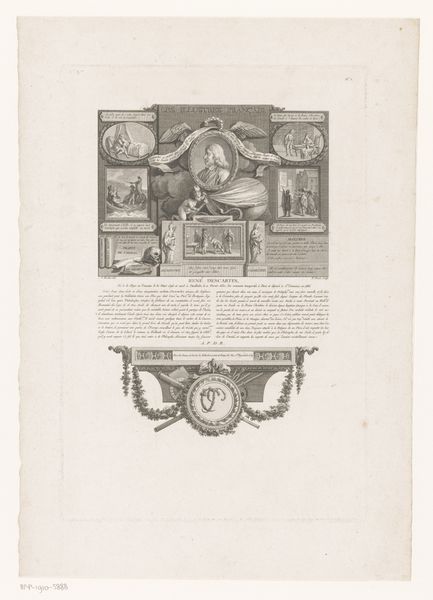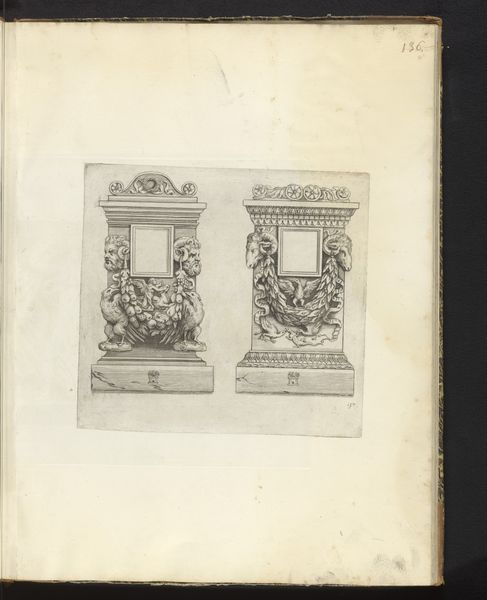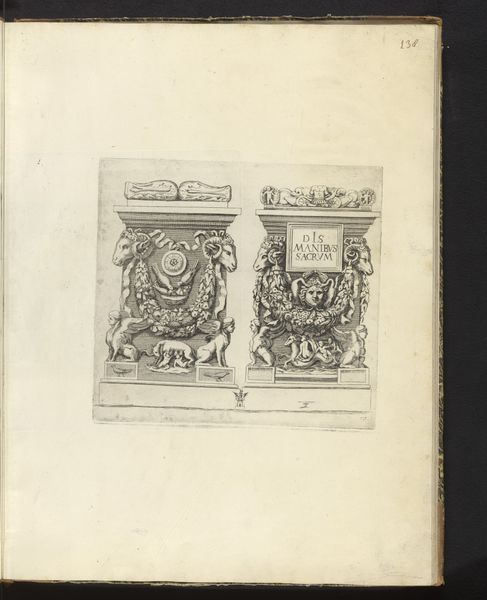
print, relief, sculpture, engraving
#
medieval
# print
#
relief
#
landscape
#
figuration
#
sculpture
#
history-painting
#
engraving
Dimensions: height 230 mm, width 340 mm
Copyright: Rijks Museum: Open Domain
Curator: Looking at this print, my immediate reaction is one of awe at the intricacy and detail captured. There is such fine work here. Editor: Indeed. We're looking at a print entitled "Twee gedenktekens van steen in de Sint-Pieterskerk in Leuven, België," which translates to "Two Stone Memorials in St. Peter's Church in Leuven, Belgium," dating from before 1887. Curator: Given its place within the St. Peter's Church, do you believe this work reinforces power dynamics by shaping memory? Editor: Absolutely. These memorials would've functioned within a complex interplay of social, cultural, and religious powers. The imagery, rooted in medieval tradition, reinforces specific narratives around lineage and faith, and commemorates individuals that played important roles in the church. I wonder about the communities omitted by the monument. Curator: Exactly! Who gets remembered, and how? That selective historical construction tells us so much. The figuration seems almost flattened by the print style itself, removing an element of the "heroic" we might expect from this theme. How might that impact its cultural function? Editor: A reduction in visual grandiosity can also signal a shift in how authority wanted to be seen, presenting figures as less overtly dominant, even relatable. Of course, that is a very delicate point. There remains clear hierarchies depicted in their size and positions within the composition. The reliefs clearly attempt to communicate a very deliberate understanding of this part of the region's past, but maybe not necessarily as grandiose as some examples we might expect. Curator: I am intrigued to learn about the artist, the specific subjects commemorated. It invites an intersectional reading concerning politics of memory and representation within religious institutions of the era. Editor: Agreed. Understanding that interplay would add immeasurable depth to our reading of these engravings. Regardless, what we can interpret right now shows that history's narratives, once static, continue to reveal new possibilities.
Comments
No comments
Be the first to comment and join the conversation on the ultimate creative platform.
